Exploring CPU Cooler Design and Testing with Cooler Master
November 28, 2014 | 14:39
Companies: #cooler-master

Exploring CPU Cooler Design and Testing with Cooler Master
After the heatsink is designed, a fan solution is needed, and this includes setting the right RPM value, as fans can be totally ineffective below a certain RPM, depending on the heatsink in question. Blade design is also important – in the photo below, the one on the left has wide, long and relatively flat blades and produces high static pressure but not much airflow. The one in the middle has shorter blades at sharper angles for high airflow, while the one of the right has blades designed to provide a little bit of both. As for size, Ron says it's a myth (or at least a misunderstanding) that bigger fans are quieter. At identical RPMs, a 140mm fan will be louder than its equivalent 120mm. However, airflow is also higher, so you can run it at a lower RPM value, hence the association with being quiet, though bigger fans also produce lower static pressure levels.Of course, air coolers are only one side of the CPU cooler story, as Cooler Master is also an original manufacturer of closed-loop liquid coolers, like its Nepton series. It also claims to be the first company to have released such a cooler to retail, although it is contested. It has made them for other companies, such as AMD for its FX closed-loop coolers, but typically for this part of the business it focuses on its own brand and retail presence rather than working as an OEM for other players like Asetek and CoolIT have done.
Coolant and tubing are two key things that need to be considered in such a cooler. The fluid used is treated with chemicals to prevent algae from growing as well as other anti-oxidation chemicals to prevent rust. After all, it's a sealed unit, and the fluid needs to continue being effective without being refilled or changed.
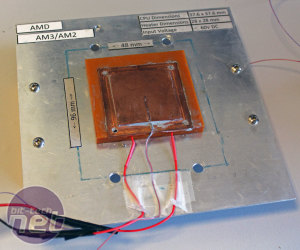
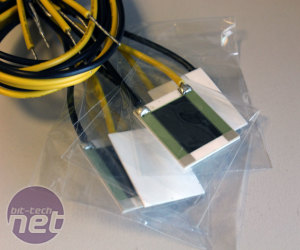
Click to enlarge - For testing, coolers are mounted to CPU-shaped copper heatspreaders that are connected to heating plates
As for tubing, Ron's preference is FEP tubing since coolants can actually eat away at PVC-based materials. FEP is also more resistant to damage, and water flow is higher, even when it's bent. He admits rubber is more flexible, but says it's more prone to breakages and kinks.
While all-in-one coolers do of course still use fans, the design of which must again be considered, a second source of noise is also introduced to the mix – the pump. In moving from the Nepton 280L and 140XL to the Nepton 240M and 120XL, Ron says the team was able to produce a pump capable of pushing 120 litres per hour but still keep it quiet, and keep performance almost the same as the larger variants but at lower noise levels by tweaking both the fans and the pump.
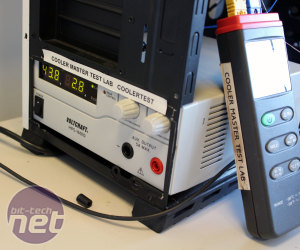
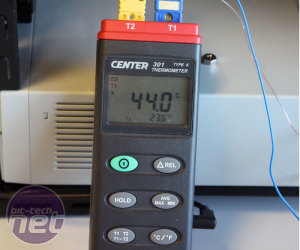
Click to enlarge - This power supply lets you control the exact load applied to the heating element, while thermal sensors measure the heatspreader and ambient temperatures
We asked whether Cooler Master would be following up on its previously released Eisberg coolers, as we saw Raijintek and Fractal Design showing off similar partial all-in-one products at Computex 2014 (they use standard fittings so users can refill or expand the loop, but it comes as a sealed unit). However, the focus for now is on optimising the closed-loop coolers. We also asked if a 360mm all-in-one was in the works, but again the answer was no. Part of the reasoning is that only one of Cooler Master's current cases would be able to house it anyway, and it's important to keep the design of products in sync.
One thing Cooler Master did share with us is that it is working on 140mm static pressure fans, the larger equivalent of the Silencio FP 120 fan that has previously been supplied with some of the company's coolers and Silencio cases.
Once an initial design is complete, it can be fed into specialist software to simulate its cooling abilities. If this checks out, a hand-made sample is produced as a mock up. If this satisfies the team at the testing stage, it's onto making the factory tooling and plastic injection moulds. An initial pilot run of 50 to 100 samples are produced, which are then tested too, before mass production begins along with the design and production of packaging materials and so on.
Ron was kind enough to show us and walk us through his standardised testing procedure for calculating a coolers thermal resistance (lower is better) and noise levels. Coolers are mounted not to CPUs, but to copper heatspreaders that replicate the shape and mounting procedure of modern sockets e.g. LGA115x, LGA2011 and AM3+. Coolers are tested on an open bench as well as in a chassis to simulate home use, and everything including the noise testing equipment has fixed positions to ensure consistency.
Inside each heatspreader is a thin heating strip, which is connected to a power supply that has voltage and ampere readouts and the ability to control the supplied voltage. Based on this, you can control the exact power being delivered, which allows you to simulate different conditions (e.g. a 95W CPU, 130W CPU, overclocked CPU etc.) without any of the load and heat fluctuations that occur when testing real CPUs. A thermal sensor gives a temperature reading, and from this you can calculate the thermal resistance – it's the change over ambient temperature (the delta T) divided by the supplied wattage. This method also allows you to test the cooler in different configurations, e.g. with fans placed in different positions, with different fan models and even with no fans at all. Closed-loop coolers are tested in the same way as well.
We're hoping to be able to get a similar set of equipment in to complement our current real-world cooler test rigs – let us know what you think!
Thanks go out to Cooler Master and especially Ron for taking the time to take us through the cooler design and testing procedures. We'll be back soon with a look at Cooler Master's PSU testing facilities.

MSI MPG Velox 100R Chassis Review
October 14 2021 | 15:04

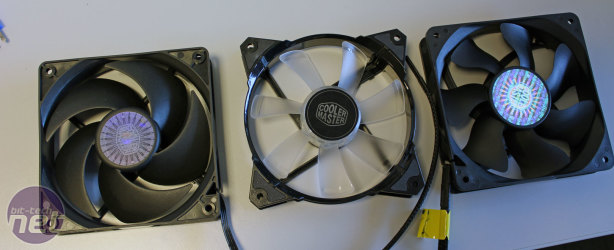
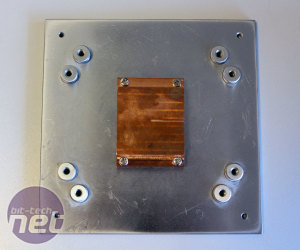
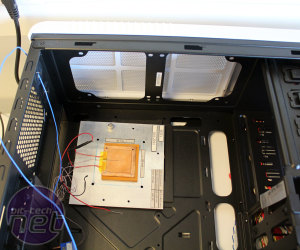
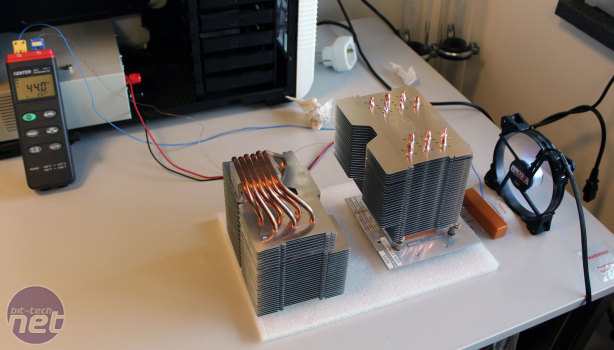







Want to comment? Please log in.